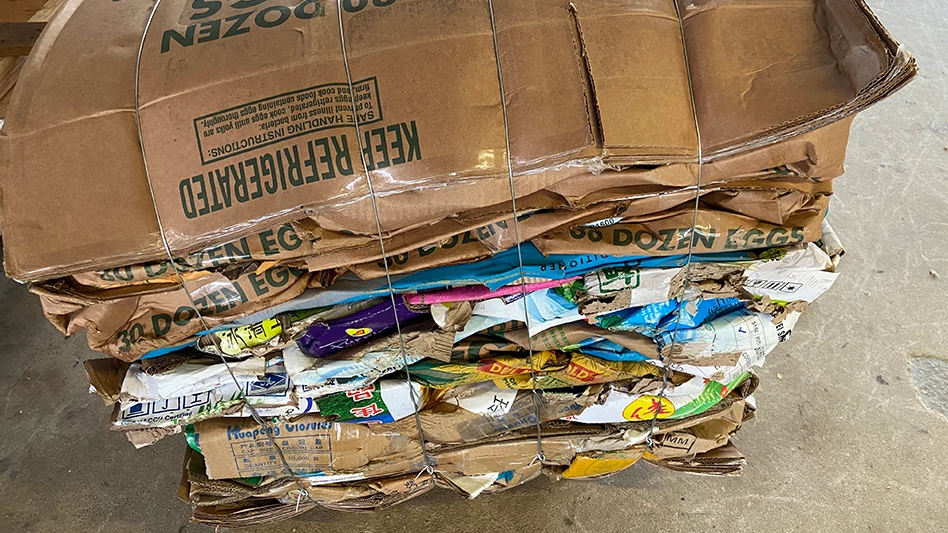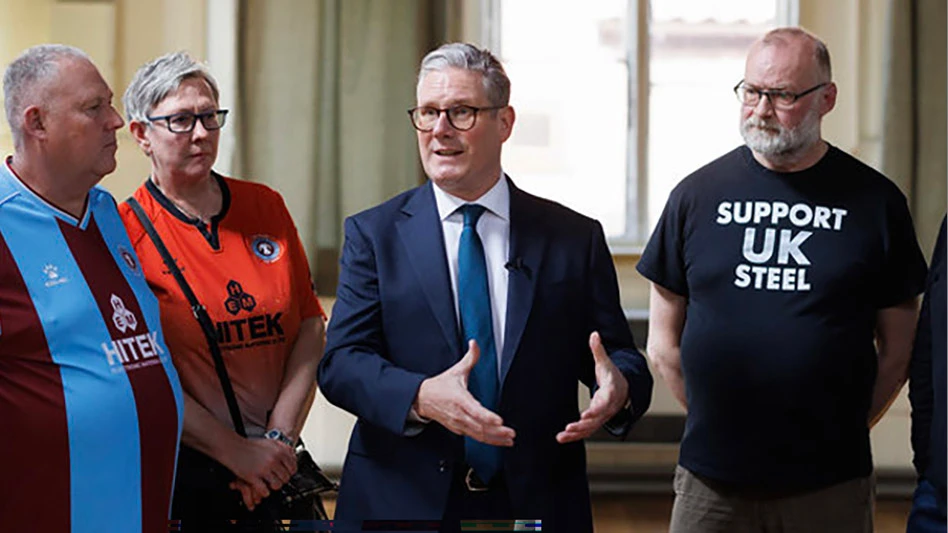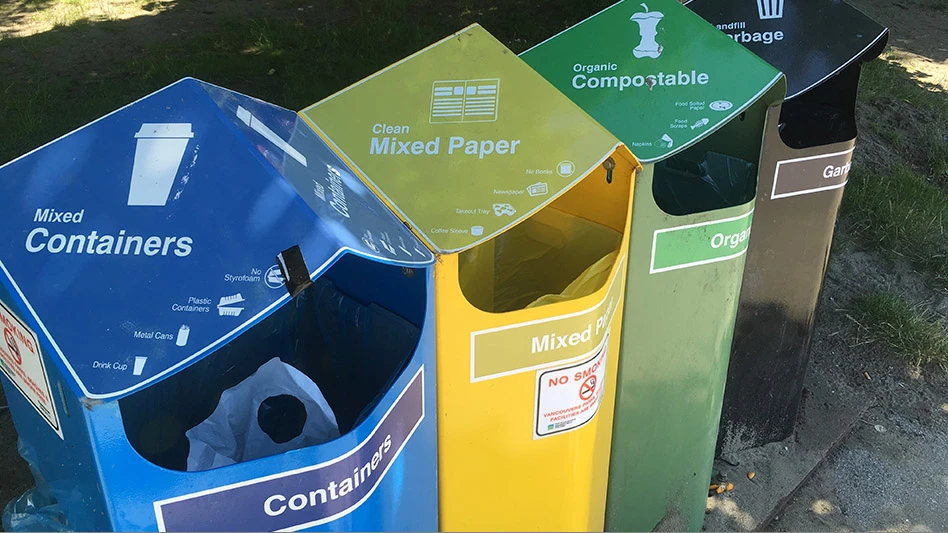
Today’s scrap metal recycling facilities face multiple headwinds along the road to profitability. Market closures because of tightening purity standards plus underdeveloped domestic recycling infrastructure have led to an abundance of scrap metal remaining in processors’ yards.
Material surpluses have driven down prices for scrap metals. Since China implemented National Sword, “prices for general mixed metal products like zorba have fallen,” says Eric Thurston, sales manager, metals, for Tomra Sorting Inc., with North American operations headquartered in Charlotte, North Carolina.
Brian Gist, global sales director for Tomra Sorting, adds, “As a result, we are seeing a trend toward recycling facilities using advanced sorting techniques with sensor-based sorting to separate mixed materials into monofractions.”
While the headwinds are strong, some recycling companies see the new stringent quality standards as a way to separate themselves from other suppliers. This will, however, require upgrades to processing equipment.
“Some customers are telling us that market conditions are right to upgrade their plants for processing the abundance of scrap metal available in North America to higher purity standards,” says Carlos Manchado Atienza, Americas regional director for Tomra Sorting.
When it comes to sorting metal fractions, a company can select from wet or dry sorting technology.
Density sorting
Dense media, or wet sorting, has been used by the scrap industry for decades to sort heavy metal fractions, such as copper, zinc and stainless steel, from light metal fractions, such as aluminum. The process is a carryover from the mining industry, where it was used to recover precious metals and coal fractions from tailings. At the surface, using water and a flocculant to float/sink the materials seems simple enough.
Initial capital outlays to build a wet plant can be attractive to some scrap metal companies. A wet plant costs less to start up compared with a dry sorting plant. However, this upfront savings can come at a long-term price. “Ferrosilicon costs can vary, ranging from $1,600 to $1,900 per ton at any given time,” Thurston says.
Gist, who spent years operating a dense media plant, says a well-run plant uses ferrosilicon at a rate of approximately 5.5 to 6.5 pounds per ton of metal sorted. “However, the average plant uses roughly 17.5 to 20 pounds per ton of fine metals fraction separated,” he says.
Ferrosilicon creates the specific gravity (SG) ranges needed to sort metals into light and heavy products. The goal is to maintain an SG ranging from 1.8 to 2.2 for floating light material and an SG ranging from 2.8 to 3.4 for the heavy product. Multiple factors influence the targeted SG values, including the material being processed and the water quality. “Stability is a constant battle in running a dense media plant, making it difficult to obtain stability and repeatability in sorting,” Gist says. “As material is floated, fine material settles in the water, and the dirtier the water, the more ferrosilicon required to get the correct specific gravity for sorting the light or heavy package.”
Thurston and Gist caution scrap metal recycling facilities that are considering investing in a wet plant to remember the sorting limitations, especially in today’s market. Floatation will produce only light (aluminum) and heavy packages. Unless combined with a dry sorting circuit, wet plants cannot further sort the heavy metals into monofractions of copper, zinc, stainless steel or lead, which limits the plant’s flexibility to adapt to market conditions.
The average dense media plant is configured to process up to 20 tons per hour (tph) of metal. SG stability and recycled particle size affect this rate. As SG instability occurs and particle sizes get smaller, production rates can slow, often to as low as 7 tph.
Dirt caught in the pores of scrap metal mixes with ferrosilicon and settles in the tanks, on the screens and in lines and pumps. This filter cake must be cleared from the system, and depending on the plant’s geographic location, it could be classified as hazardous waste, which makes disposal more difficult and costlier. These items, plus the need to keep the tanks and lines from freezing during the winter in many regions, can result in continuous care and significant long-term operating costs for dense media plants. Operations must figure these costs into the equation when considering the type of sorting process they will employ to separate metal fractions.
Advanced sensor-based sorting
While newer to the market than wet sorting, metal recycling facilities have used dry sensor-based sorting for nearly three decades. “We began selling our optical sorting equipment in North America in the early 1990s,” says Manchado Atienza.
In addition to optical sorters, the metal recycling industry also employs X-ray, electromagnetic and laser technologies to sort impurities from ferrous and nonferrous metal fractions. Rather than water, short bursts of air are used to either eject detected impurities, dropping the desired product in a negative sort, or eject the product and drop the impurities in a positive sort.
Whereas wet sorting provides simply a light or heavy product package, a dry system takes the sorting process a step further, producing monofractions. “Advanced optical sorting further separates the copper, nickel, stainless steel, lead and other metals from mixed metals, like zorba, to deliver a higher quality aluminum product as well as other monofractional products,” Manchado Atienza says.

In a market where mixed metals are selling at a low price, dry sorting gives companies the flexibility to adapt to market conditions, changing their sorting processes to separate the more valuable fractions to meet market demands.
Changes to the sorting circuit are made through the equipment’s control software package. Tomra recently introduced its ACT operating system that allows operators to make product package sorting adjustments using a touch screen. “It takes an operator less than two weeks to learn how to run a dry plant,” Thurston says, “but running a wet plant is more of an art form and can take up to 18 months for an operator to run it at peak efficiency.”
Gist explains it’s a struggle to learn how to optimize SG in a wet plant to achieve maximum product recovery at a low flocculant usage rate. “If you have a good operator of a dense media plant, you need to retain him as he will save the company on operating costs,” he says. “Whereas with optical sorters, the software program offers consistent and repeatable results at the touch of the screen, so it’s easier for the operator to learn and run.”
Gist adds that wet plant operators often are tied to the facility to keep a close eye on the floatation process. New technology available to the market for dry sorting systems uses the cloud to report critical operating data to companies using optical sorters, so the sorting circuit can be operated remotely, if desired.
Some metal recycling facilities point to the higher initial capital expenditure as a disadvantage of the dry sorting process. Thurston says long-term operating costs for running optical sorters are substantially less than operating dense media.
“Operating costs are up to 90 percent lower with dry sorting,” he says, “and that’s one reason why a large Midwest metal recycling operation sold off its dense media plant in favor of a dry process. Plus, the uptime availability for optical sorters is around 95 percent verses approximately 75 percent with a dense media plant.”
Historically, sorting fine metal fractions of less than 0.4 inches is where wet separation held a distinct advantage because the resolution of optical sorting equipment was effective for fractions sized 0.4 inches and larger. Recent advancements in technology have led to the introduction of the Tomra X-tract X6 Fines package for its X-ray sorting technology.
“This package now allows us to effectively detect and sort fine metal fractions about 50 percent smaller than what was previously available to the market while offering recovery rates of 95 percent and higher,” Thurston says.
The right mix
Thurston offers a suggestion to companies that operate dense media plants that want the flexibility of separating heavy mixed metals into monofractions: adding sensor- based sorting. Different types of dry sorting technologies can be added to the density sorting process—either before or after the wet sort.
“Unlike a wet plant, dry sorting technology is scalable to meet the operation’s needs,” Thurston says. “A dry sorting line can be cost effectively added to the back end of the process to sort monofractions, allowing a company to take advantage of market conditions.”
Whether employing wet or dry separation for metal fractions, Gist says final product purity must be paramount. “China’s implementation of National Sword and the many Southeast Asian markets following suit is an indicator that purity standards will only get more stringent. Therefore, a recycling operation must choose the right technology that will offer not only the product the company needs to sell to the market but also at the right purity levels.”

Explore the January 2020 Scrap Metals Supplement Issue
Check out more from this issue and find your next story to read.
Latest from Recycling Today
- Steel Dynamics nets $217 million on record shipments
- Massive Chinese steelmaking rebound recorded in March
- LME looks into sustainable metal pricing
- OnePlanet Solar Recycling closes $7M seed financing round
- AMCS launches AMCS Platform Spring 2025 update
- Cyclic Materials to build rare earth recycling facility in Mesa, Arizona
- Ecobat’s Seculene product earns recognition for flame-retardant properties
- IWS’ newest MRF is part of its broader strategy to modernize waste management infrastructure





